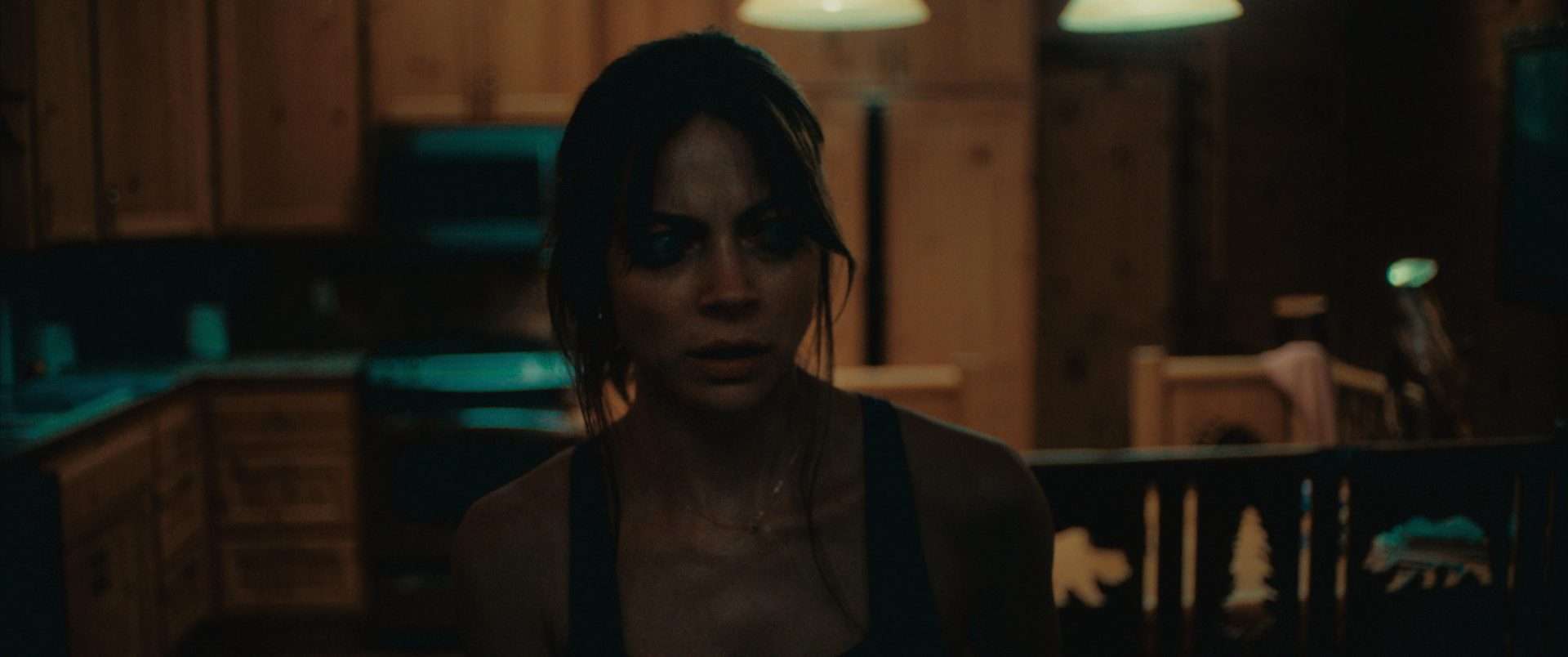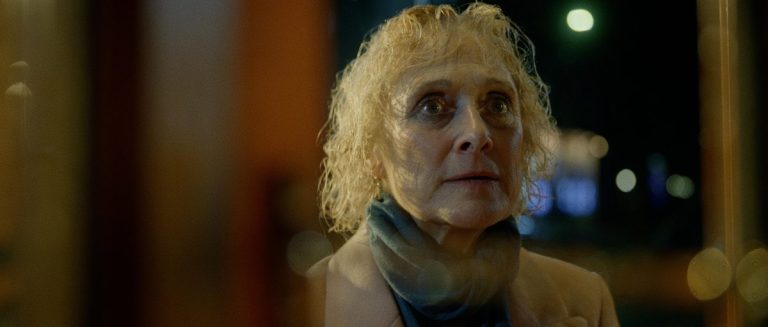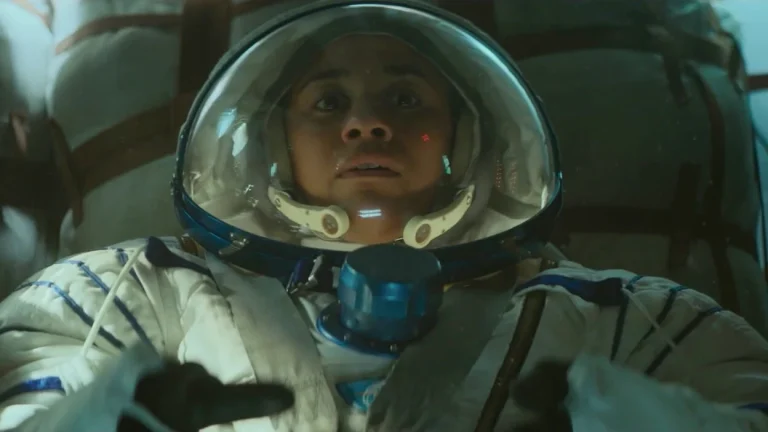“Call of the Void” revolves around Moray (Caitlin Carver), a 30-something woman who retreats to a cabin in the woods after her brother’s sudden death. Within the first few minutes, the film reveals much of what we need to know about her. We learn about her age and desire for a peaceful escape for the time being. We also get a peek into what is causing her to leave her life in the city and the type of relationship she shares with her parents and others. That introduction reveals plenty about her character and immediate emotional goals and needs.
Moray hopes for a quiet getaway, but these hopes get shattered by four college students who show up at the next house. They are more youthful and vibrant, almost the opposite of who she wants to be or be around. So, she tries to maintain distance, likely because they remind her of the enthusiasm she has lost toward her life. However, she changes her mind after they play a song that reminds her of her late brother. One thing leads to another, and she joins them for a hike. That’s when things start to get bleaker for everyone.
The script lays out bare details about its 20-something student characters and their professor, who happens to live in a nearby cabin. Lucy (Mina Sundwall) is cheerful but flippant, possibly because of her age. She invites Moray to their house and becomes the bridge between Moray and her friends. Sterling (Richard Ellis) and Cole (Christian Antidormi) are self-righteous musicians who have youthful arrogance. They even wear their smirk with pride. Unlike them, Darryl (Ethan Herisse) appears meek but kind. He hopes to be a part of the group but is instead made to feel abandoned, rejected, or ignored.
Darryl’s core insecurities become a common thread between him and Moray, which offers an underlying subtext to the entirety of “Call of the Void.” Moray does not look intimidated or hurt like him for the most part, but you can sense her feelings of abandonment and rejection resurface now and then. That is primarily why she decides to leave her past behind, hoping an escape will show her the way out of her misery. With no clear prospects for the foreseeable future, she clings to the carefree company of these teenagers. Despite their snarky behavior, she sees them as a way to get out of the rut.

With them, Moray desires to venture into the unknown despite knowing that it may lead to harm. The script introduces this line of thought but fails to do justice in addressing and decoding her underlying self-destructive desires. There is a lot left unsaid and open to interpretation about its characters, their motives, and the reason for their strange transformation across the film’s duration. Overall, the film leaves many gaps in its narrative, hoping its vagueness will suffice as profundity. However, unlike films where things are intentionally ambiguous, there is no strong purpose at work in this case.
The script offers hardly any character development, which makes it impossible to resonate with or root for any of them. There is very little underneath the details we learn about the characters’ personalities or their emotional landscapes. So, even their fears feel woefully one-note. Although the script is lackluster, the sound design tries to build a certain sense of mystery and tries to establish it as a moodscape. Instead, it reveals itself as a hollow attempt at exploring the connection between its metaphysical and psychological elements. Oftentimes, it merely offers an illusion of depth.
In addition to lacking substance, “Call of the Void” stylistically falls flat, especially in its latter half, where it tries to present itself in the hypnotic narrative style of Nicolas Winding Refn. Much like the characters in Refn’s films, they stare into a blank space and seem like they are possessed by an otherworldly force. In Refn’s works, the ‘style is substance’ approach feels justified and creatively earned. Unfortunately, while hoping to be similarly visceral, James B. Vox’s film feels rather childishly comic since it comes across as a goofy imitation.
Of course, the themes of alienation and otherness are at play in its isolated but serene landscapes. Its remote setting inherently lends itself to a sense of otherworldliness and seclusion. Trying to be a convincing blend of folk horror, psychological thriller, and mystery, “Call of the Void” ends up acing none.






![Moon Manor [2022] Review- All heart, notwithstanding some amateurish patches](https://79468c92.delivery.rocketcdn.me/wp-content/uploads/2022/03/Moon-Manor-1-768x426.png)
